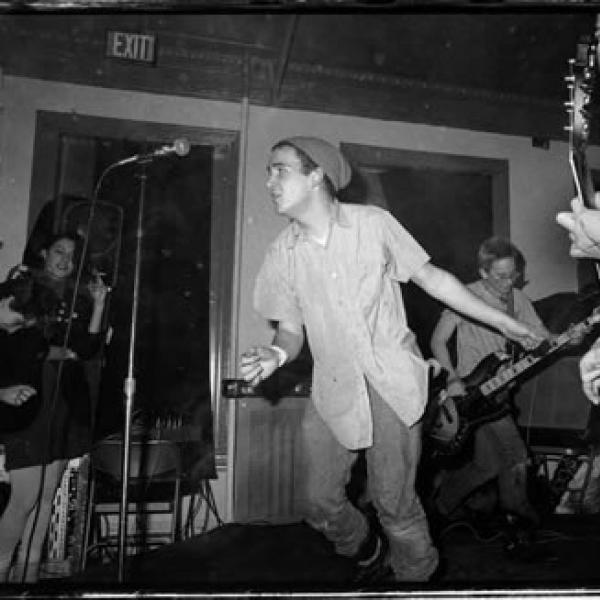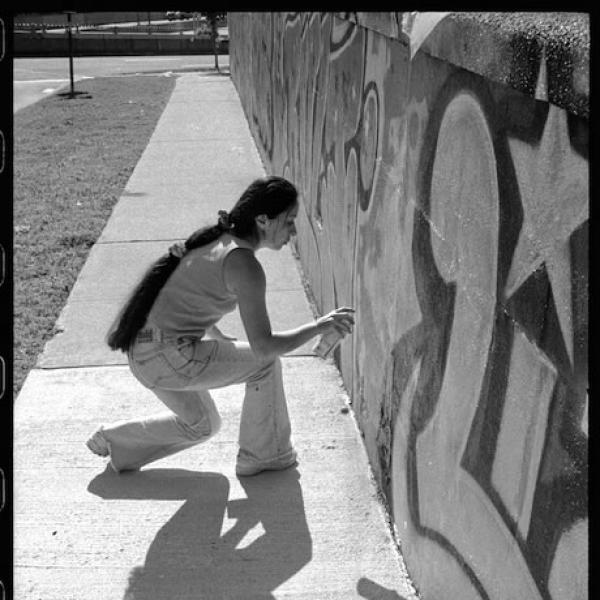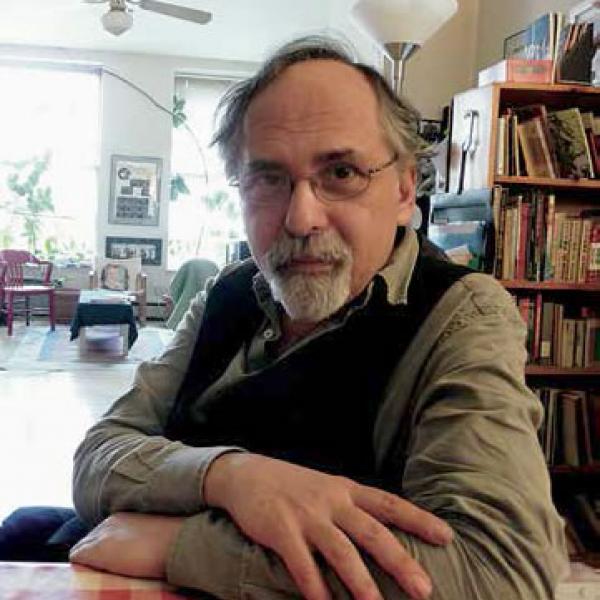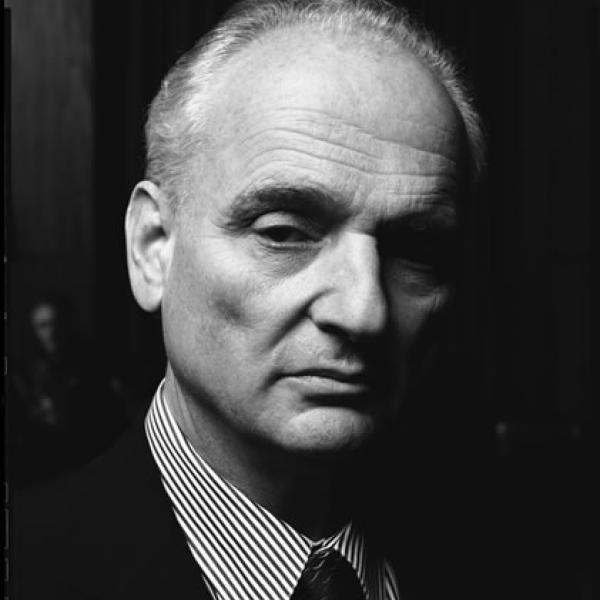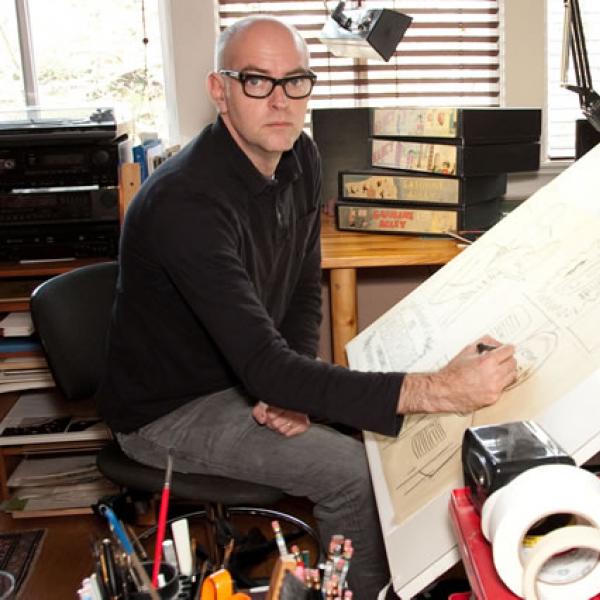FUN Gallery (Transcript)
Patti Astor: Well, FUN Gallery. It was all an accident. I came to New York to be an actress, you know, move to the cheapest place you can find and that’s where you’ll going to find all the artists and people that you’re going to want to work with. So I ended up moving over to the East Village in early 1975. And this was when no one was moving to the East Village. But as it turned out, the local bar was CBGB’s, and Talking Heads and Blondie were the house bands. I did probably 14 independent, very independent, movies between… My first movie was
Unmade Beds, and Blondie was the star. And I felt I had arrived.
I was already a celebutante by the time I did meet Fab 5 Freddy, who’s the person that is responsible for bringing hip-hop to the world. There’s no doubt about that. You have to understand, in 1980, no one downtown knew anything about graffiti art, rap music or b-boying, which is breakdancing. So then, all of a sudden, graffiti and hip-hop and everything was everywhere and it was really interesting too, because at that time it still was happening in the streets. Everybody had the big boom boxes, and so that’s how you would hear the new music in the jams, where people would bring their cassette tapes that they had recorded uptown, downtown, and everybody’d just be hanging out on the street and the guys would play the new tapes, the new music, through their boom boxes. And then the graffiti art started covering the East Village entirely. We started paying attention to the trains. And so I got to know Futura and Zephyr and Dondi, and when they found out with me they could get into any club in town to the VIP room, I became quite popular. So something that’s kind of a show of respect and it still goes on today is that in that community you offer a gift. And so Futura offered me a painting. Well, at the time I was living on East Third Street, which we called Street of the Stars a number of the downtown stars lived on that street, because they were city apartments that were $65 a month because they were right across from the other side of the block, the men’s shelter. Which took up the whole block.
So I said, “Well, you know, Futura, that’s so great, but you know what?” And I had learned by this time as well that a mural is more prized than a painting. Because a mural is just yours and it cannot be bought or sold. So I said, “You know what, Futura? I have a great idea. Why don’t you do a mural on the front of my crumbling $65 apartment in the front room on the wall? And then in the afternoon we’ll have an art opening and barbecue.” So he thought that was a great idea. And so he did the mural. Kenny Scharf, I had met him. He and Keith Haring had come to go to school at Visual Arts. By this time there was, like, a second wave of people who had come to the East Village because they knew something was going on. When we were there, we just went over there. It was like a bomb zone. We just went there because it was cheap. They went there because it was cheap and there was something happening.
So anyway, I had met Kenny and so he had started doing this artwork called Van Chroming, which meant that he did all kinds of dayglo doodads all over your appliances. He really loved vacuum cleaners. So he would decorate everything. So he did my blender and my alarm clock and my toaster, Futura did the mural, and I made potato salad and ribs. And in the afternoon we had the art opening and barbecue. Keith Haring, Dondi, Jean-Michel Basquiat, Kenny. FUN Gallery artist Stephen Kramer, Futura, of course. A number of people just came and it was a big success. And Keith Haring looks out the window and like an afternoon, the bums are all sitting on the garbage cans. He looks out the window, he goes, “Ah.” So we all run over to the window. Jeffrey Deitch and Diego Cortez are getting out of a cab in front, on East Third Street. They’re weaving their way through the bums. We’re like, “Dang.” And so that was a big success. And then the next thing that happened was Bill Stelling, who I had known from the Mudd Club, said, “Patti, you know, I’ve fixed up this little space on East 11th Street as a gallery. Do you know any artists?” I said, “Yes. I know a lot of artists.” So I was getting pretty tired of picking up the beer bottles at my apartment by this time, because it’d become this huge party spot. So Stephen Kramer actually was our first artist, and he came up with 20 colored pencil drawings. And so we were so broke that we just cut the mats ourselves, and then we had them shrink-wrapped in plastic like record albums, stuck them all up on the wall, turned on the boom box, did some daiquiris in the old Kenny Scharf Van Chrome blender, and sold all 20 drawings for $50 in one day. Which, $1,000 in 1981 wasn’t too shabby.
Well, we were the first gallery in the East Village, but the activity was incredible. Everyone was running around. I mean, I was still doing the movies. Everybody was running around on the streets carrying canvases, guitars. The walls were crumbling, but they just became this giant outdoor canvas. And things were still very cheap then. I mean, our rent for the FUN Gallery was-- I mean, granted it was 8 feet by 25. And things were still very Wild West down there. And things were very cheap, and our rent for the gallery was $125.
I have absolutely no art training other than going on my own to museums, of course, and so on. But when I first started getting into the films with people like Duncan Hannah, we would want to go down to Soho first of all because we wanted to see the Warhol stars. and Bill, my partner, Bill Stelling, by the way, said, “Well, we’re even going to let the artists name the gallery.” And so Kenny came up with FUN Gallery, and that was just so stupid. After that we just let it stick.
Since the place was so small our first year, the place was so small we could only have one-man shows. And we never set out to be a graffiti gallery. We just gave shows to all of the people that were in this community that we thought really had talent. So we also included Stephen Kramer, Arch Connelly. And as well as the graffiti greats, Dondi, Fab 5, Lee, Futura. But every artist was treated just as an independent artist. And we were actually the first gallery to give graffiti artists one-man shows. To identify them as separate talents. Because usually they were just in these big smoosh piles. “Oh, that’s graffiti art.” And we were the first gallery to do that, and I think we were very proud of that. And I also think that the thing that we did was we opened up the art world to everyone. No more white wine, white walls, white people.
The other thing that I saw is when I went to high school, public high school, in Cincinnati, Ohio, we had all kinds of art classes. I wasn’t even that interested in music. I had my own viola to take home. And these kids, the culture had given up on them. And they knew it. At the time, and I think that also we have to talk about back in ’74 the great Afrika Bambaataa formed the Zulu Nation. To give these kids something else to do to feel that they were valued. That drugs, gangs, death, or jail [were] not their only options. But if you were going to count on the society to do it for you, that was not going to happen. So we created our own cultures.
We were jammed.
I mean, we were only open on Sundays from three to six to start out with, so it wasn’t too hard to pack the house. But the openings, I mean, people were sick of it. They were sick of these bombastic, empty, huge moneymaking things. They needed a breath of fresh air.
It was a really great exchange and I think that what I’m most proud of with the FUN Gallery is, well, my quote is I wanted everybody who walked through that door to feel, “Yes, I can make a difference here.”
I met Jean-Michel Basquiat on the-- he was just hanging out there and I didn’t know who he was, and I ran into him on the steps going up to the VIP room of the Mudd Club, and I was just teasing him about his weird hairdo. And later on I found out that he was really a genius. There was a very famous art show at the Mudd Club, and Keith Haring had been given the opportunity to curate a fourth floor of the Mudd Club as a gallery and he asked Fab 5 and Futura to curate a show, and they did a show called “Beyond Words.” And that show is so historic, because that was the real melding of downtown and uptown. People like Alan Vega showing next to Futura and Fab 5 Freddy. Afrika Bambaataa was the DJ, and that was the first time he’d ever performed downtown. And Jean-Michel just had these drawings, and one of them was
Flats Fix, and I’ll never forget it. I said, “This guy’s a genius.” So many moons later, Jean-Michel was treated very poorly, let’s just put it that way. The art world was still, despite our efforts of peace, love, and unity at the FUN Gallery, it was very racist still. And he was pretty much exploited. And realized that. And so we negotiated his kind of return to the hood with his show at the FUN Gallery. And the paintings were so beautiful. And it’s recognized as his best show ever.
Well, four years later, as I said, we were the first gallery in the East Village, and four years later there were probably 70 galleries. People saw that we were a business, that we were successful. I don’t know how they saw that, because we never made any money, but… Anyway, they knew that there was money to be made, and so people just were charging in there, sort of the third generation of people who came in there, and renovating these Tenement storefronts with the track lighting, the white walls. And they were bringing in white wine and white people. I just couldn’t handle it. You know, it’s always better to leave the party before it’s over.
I never really planned to have a gallery in the first place. I really wanted to get back to my movie career, and then I really think FUN Gallery was never a business. FUN Gallery was a movement, it was a family, it was a state of mind. Why should it last? Just like my Black Panther brothers said, “You got to seize the time.”
We move on. We can move on. There’s always another frontier to conquer.
I think that the most important thing was that we opened the art world up to everyone, and not only just the art world, but to a whole culture that was just about to be lost. That we opened the culture up to everyone and now hip-hop and what we created is worldwide, and it still has a huge influence on people.
Excerpt of "Have We Met" and "Downtown" from the album, Thru Nature by deeB,
Excerpt of "A Reprise of Me" from the album, Six Onna 7 by Tha Silent Partner,
Excerpt of "Lefty Loosey ft. Tab" from the album Lily by Anitek,
All used courtesy of Creative Commons and found on WMFU's
Free Music Archive.



